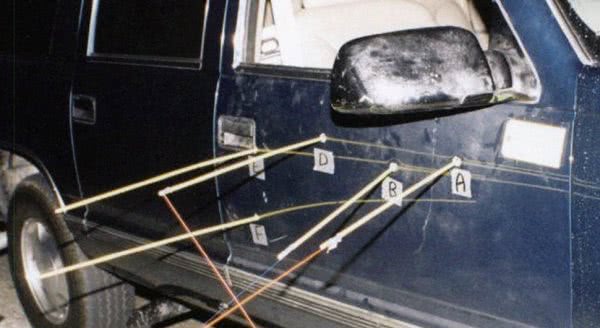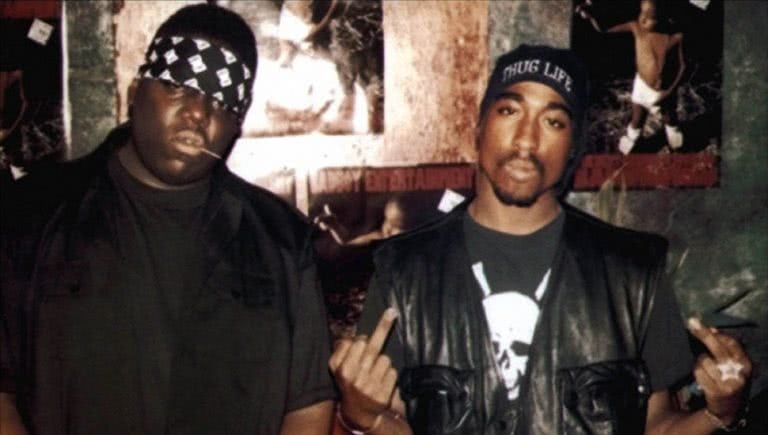On September 7, 1996 and March 9, 1997 respectively, Tupac Shakur and Christopher Wallace – better known as Notorious B.I.G – were murdered in cold blood. 2Pac was shot aged 25 while in Las Vegas while Wallace, just 24, was killed in LA, both the victims of drive-by shootings from unknown assailants.
In the space of six months, the rap world lost two of its greatest visionaries. In the years after, rumours and speculation would run rife about the slayings which to this day remain listed as unsolved.
After hitting multiple dead ends, the case was handed to LAPD’s Greg Kading. A seasoned detective who’s clocked up considerable hours investigating homicide and drug crime, Kading was the right person for the job.
In 2010, following his retirement, Kading lifted the lid on the investigation with his tell-all book Murder Rap, which was adapted into a Netflix series, The Murders of Tupac Shakur and Biggie Smalls.
Now, Kading is bringing the discussion down under for The Murders of Tupac and Biggie – A night with Greg Kading. The evenings promise to offer illuminating and hitherto unseen insight into the shootings. Ahead of his arrival, Tone Deaf spoke with Kading for a three part series.
Part 2: The Theories, and part 3: The Findings coming soon.
Tone Deaf: How did you get involved in these cases? In your career previously, had you been involved in things like Hip-Hop Wars? Had you had experience in this?
Greg Kading: I had no experience in the hip-hop world at all; the music, the subculture of that music. I had no experience with it, but I did have a very strong and extended background in gang investigation, narcotics investigation, and cold case homicide investigation, so I think that’s why I was recruited in.
Love Music?
Get your daily dose of metal, rock, indie, pop, and everything else in between.
I had no idea what I was walking into insofar as the music genre, and the environment that ultimately these murders happened in. I recognised that right away, and the first thing I did was I reached out to a friend of mine, because I knew that that was his world, and thought that he would be the best asset that I could possibly bring into the picture.
Fortunately, that decision paid dividends because my friend’s insights into the whole thing helped me tremendously.
TD: How does the hip-hop world or entering the hip-hop world impact a murder investigation?
Greg: Well, it’s very much that subculture of the gang environment … not so much hip-hop, but definitely rap music, and especially gangster rap music. That all comes out of that street culture, that urban culture where you don’t cooperate with the police, you don’t talk to the police, you don’t involve yourself in these situations.
That’s what makes these homicide investigations very hard because nobody’s willing to talk to you. That’s why these cases went unsolved for so long, because of that street rule that you just don’t snitch, you don’t talk, you don’t cooperate.
TD: What was day one like? You come in, you start your day, you open up the manila folder about this investigation that’s been left on your desk. What do you see? What’s your first interaction?
Greg: I wish it was just a manila folder. It was 97. If it were just a manila folder, I would have managed it better. There were 97 four-inch binders, so essentially tens of thousands of documents that we had to wrap our head around, and it was daunting; It was intimidating having to grasp the enormity of the case.
Like, “Holy smokes, there’s so much material that we have to digest before we can even get started.” That’s what the first day was like. That’s what the first couple months were like; building a team and everybody going through all of the previous investigative material to try to figure out where to even start.
TD: When did it become apparent that these were not going to be normal investigations for you?
Greg: Right off the bat, we knew that all the traditional investigative methods had been exhausted. They’ve already gone through the routine of interviewing people and being told that, “We didn’t see anything. We didn’t hear anything. We don’t know anything,” and checking phone records, and looking at people’s backgrounds and associations.
All of the routine police work had been done, so we knew that we had to come at it with a different approach. We had to reinvent the wheel, and that was where we sat down and we developed some strategic approaches and investigative strategies, and began to do a process of elimination.
We thought, “We’re going to accept every theory as if it could be true, and then if we can completely eliminate it then we know we’re narrowing it down.”

TD: These lateral-thinking approaches or these out-of-the-box ideas; What were some of them? What were some of the eureka moments you had once you realised that you needed to approach this from a different angle?
Greg: Well, we knew we were dealing with drug dealers and gang members. The entire team had a tremendous amount of experience dealing with gangs, and we knew that the drug world is one of those things where if you can … our strategy was to put people into positions where it would be in their best interest to cooperate, and we knew these people were dealing drugs.
So, we developed these drug investigations, these drug prosecutions, and knew that we could then approach these individuals and use that information, that leverage, to get them to cooperate. We had to compel them to cooperate, and that was the idea.
It was like, “We’ve got to get in there. We’ve got to figure out a way to make these people know that their best option is to sit down with us and talk to us, because otherwise they go to prison for the rest of their lives.”
That was the strategy, to use these investigative tools and techniques to make people sit down and have a conversation with us, because it would then be in their best interest to do so.
TD: Was it through those conversations that some of your targets began to emerge? Or did you sort of have targets in mind well before you even really started?
Greg: We had targets in mind well before we started. We knew all of the theories. We knew who the people behind those theories were, so we were working on essentially three practical theories and we knew who the people were involved in those.
There was the theory about the government, the LAPD… There was the theory about Suge Knight, there was the theory about Death Row Records. There was theories about Crips and Bloods; We just took them all. We said, “Let’s approach them all as if these are the most probable answers to this mystery.” We took a shotgun approach, you know?
We were like, “Let’s investigate this as if it’s true.” As we began to disprove the theories, at the end of the day you end up with one that you can’t disprove, and that becomes the most viable theory…
…Then you corroborate that, and use that as your forward momentum.
Next, we look at some of the theories that were brought to the investigation team.
Check out a freestyle from Tupac and Biggie:
The Murders of Tupac and Biggie – A Night With Greg Kading
Friday, July 26th
The Back Room, QLD
Saturday, July 27th
The Croxton Bandroom, VIC
Wednesday, July 31st
The Juniors, NSW
Saturday, August 3rd
Norwood Hotel, SA
Sunday, August 4th
The Saint George Hotel, WA
Tickets available now via Oztix

































